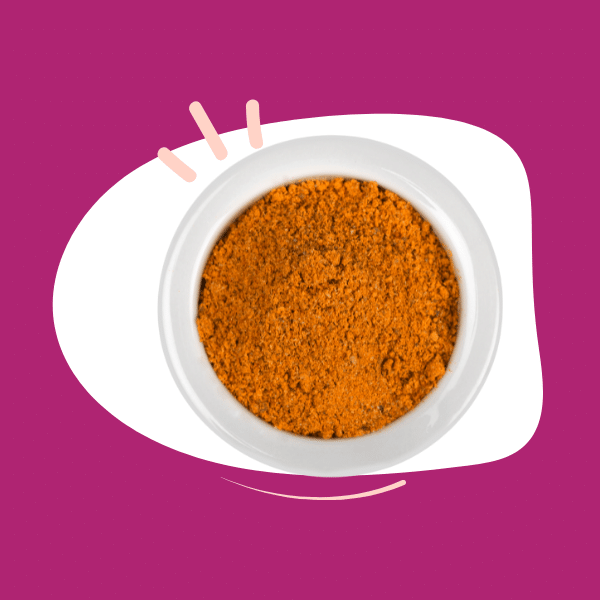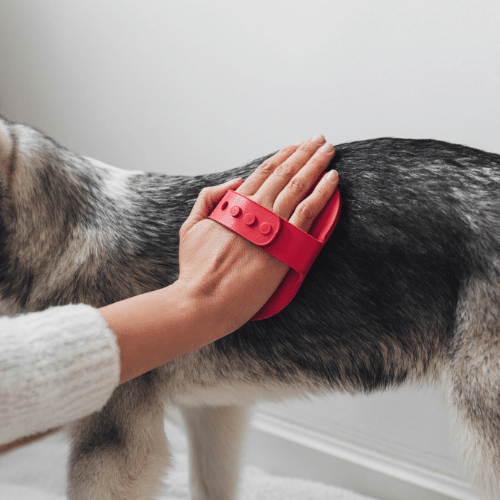Stress, fear and anxiety in our dogs: causing disturbing behaviour we can see, and cortisol level changes that the new field of hair analysis can see.
What’s more, it turns out that chronic stress can have serious health implications and may be higher in multi-dog households.
Do you know what happens when dogs get stressed? Or, more particularly, experience fear or anxiety?
Stress of one kind or another – fear of thunderstorms, separation anxiety, stranger fear – can set off a complex chain of events. If we look at the diagram below[1],we can see there are multiple triggers, and in some cases predispositions, that set off a domino-like effect in the dog.
This can lead to both short and long term effects on the health and life-span of the dog: accelerated ageing, shortened lifespan, increased immune-mediated diseases and other disorders.

How long does the impact on the body of a stressor last? There’s not much information about this, but it’s thought that different stressors activate different parts of the stress response system. One feature of the stress response is that a single acute stressor can lead to long-term neurochemical changes.
However, consider a situation of chronic stress. For example, a dog with thunderstorm phobia living in a storm-prone area, would have a stress response every time there’s a storm. A dog suffering from separation anxiety would react every time they were left alone.
These animals would suffer chronic repeated and uncontrolled stressful episodes, that would build on each other over a lifetime. Chronic stress is associated with high levels of cortisol in the blood stream, which in turn has been related to a number of human disorders including obesity, insulin resistance, cardiovascular disease, immune disturbances, altered endocrine responses and nervous system disorders. The same is likely true for dogs.
However, there’s something else that occurs from chronic stress, and it’s called immune dysregulation. What does this mean, in simple language? Basically, instead of adapting to the stressors, the immune response malfunctions. While acute stress enhances immune function through trafficking of white blood cells and release of cytokines, chronic stress tends to have more of an immunosuppressive effect.
Here are some other impacts.
Stress affects the skin
While acute stress promotes wound healing by increased local inflammation and white blood cell mobilization, chronic stress suppresses interferes with wound healing. Increased stress has also been correlated with disruption of the epidermal barrier function, which in turn, may lead to inflammatory skin disorders.
Stress affects weight
One thing that stress-related hormones do is mobilise energy stores to provide fuel for an animal in distress. A consequence of chronic stress, therefore, is high energy stores, increased appetite, and food seeking-behaviour. Because the body may not burn off the energy that’s been mobilised, long term effects of stress can include obesity, insulin resistance and diabetes, and cardiovascular disease.
Stress affects the brain
Short term stress may enhance the ability to store information, but it also leaves the brain susceptible to injury. Long term stress results in hippocampal neuron loss resulting in memory loss, and over a long period of time, to cognitive defects, including learning and memory problems, as well as depression and anxiety.
How do you know if your dog is stressed – uneasy, fearful or anxious?
There are behaviouralindicators of stress – uneasiness, fear, or anxiety. Here are some you may recognise:
- Yawning and lip licking
- Ears flattened against the head, tail down and often tucked between the legs
- Submissive behaviour: lying down on its side, lifting a hind leg, displaying the abdominal area, and sometimes urinating
- Aggressive posture: raised fur on the shoulders and over the rump and lips retracted in a snarl
- Often disinterested in food, play, or other interactions
- Panting, drooling, weeing and pooing
- Pacing, digging, destructiveness, excessive licking
- Hiding, shedding, and whining
There may also be multiple, conflicting signs at the same time!
The hair of the dog. (And not the liquid kind.)
While observation of behaviour is one way of determining the stress level of your dog, researchers continue to explore other less subjective measures. Research published in 2019[2], looked at canine hair cortisol. Apparently, hair cortisol concentrations (HCC) is considered a promising indicator of long term hypothalamic-pituitary-adrenal (HPA) axis activity.
And as noted earlier, while the short-term stress response is adaptive and crucial in facilitating the body’s ability to cope in emerging situations, chronicstress causes overexposure to glucocorticoids due to chronic hyperactivation of the HPA axis and this can result in endocrine, metabolic, autoimmune or psychiatric disorders.
In this study then, the researchers wanted to understand the effects of lifestyle, medications, and social environment as well as disease and behaviour stressors on the hair cortisol concentration (HCC) in a population of Border Collies.
What did they find?
Three’s a crowd!
Dogs living alone or with one companion dog exhibited lower HCC than dogs living with three or more other dogs. These findings mirror previous findings and suggest that co-habiting with other dogs may be a cause of day-today chronic stress. (Researchers note it’s an area that needs more research however.)
Flyball ups the stress factor.
Although no difference was found in the HCC between dogs classed by owners as companion, working or competition in the present study, dogs involved in flyball, a competitive dog sport, had higher HCC than those never involved in this sport.
Vital exhaustion. What??
Here’s something unexpected. Dogs showing greater signs of fear/anxiety towards things like loud noises and traffic and dogs showing greater signs of fear/anxiety towards strangers both exhibited lower HCC.
While you might expect to find higher HCC levels dogs with this kind of fear or anxiety, the researchers indicate it is possible that the HPA axis of these dogs may have become dysregulated following chronic exposure, leading to a state of HPA hypo-activity, or ‘vital exhaustion’. Recent studies have found similar results in human anxiety.
Want to help your dog’s immune system manage chronic stress?
Our superfood blend of papaya and superfungi helps support your dog's immune system health.
The Tropical Wonder with superfungi booster, is made from all-natural, highly bio-available, dietary sources. It’s rich in phytonutrients and adaptogenic herbs and mushrooms, that have anti-inflammatory and immunomodulatory properties, to help support wellness and immune system health.
You could also try our daily health jellies...
SOURCES
[1] THE BIOBEHAVIORAL EFFECTS OF STRESS RELATED TO FEAR AND ANXIETY IN DOMESTIC CANINES, A Thesis in Biobehavioral Health by Nancy A. Dreschel. She went on to write Dreschel, Nancy. (2010). The effects of fear and anxiety on health and lifespan in pet dogs. Applied Animal Behaviour Science. 125. 157-162. 10.1016/j.applanim.2010.04.003 - unavailable except in abstract.
[2] Packer RMA, Davies AM, Volk HA, Puckett HL, Hobbs SL, Fowkes RC. What can we learn from the hair of the dog? Complex effects of endogenous and exogenous stressors on canine hair cortisol. PLoS One. 2019;14(5):e0216000. Published 2019 May 22. doi:10.1371/journal.pone.0216000

















